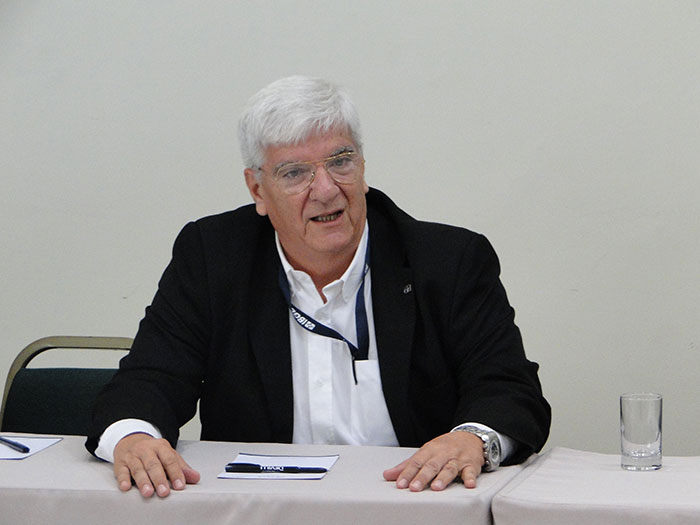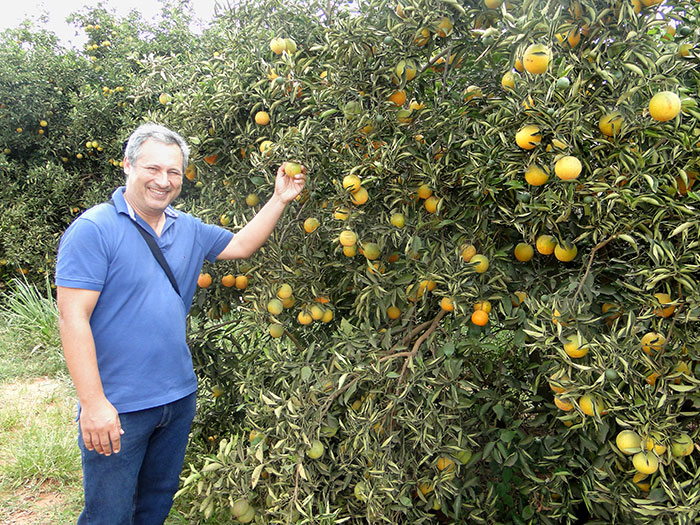Official visitors from Latin American countries observe Census of Agriculture data collection
December 06, 2017 03h00 PM | Last Updated: December 07, 2017 06h23 PM
Representatives of statistical agencies from nine countries in Latin America and in the Caribbean have been, since Monday (4/12), of the International Technical Visit for Observation of the Brazilian Census of Agriculture, in Maringá (PR). During the event, up to the 7th of December, the observers will get to know details about the census operation and take part in field activities in order to understand the operating dynamics of the 2017 Census of Agriculture. The survey will be evaluated at the end of the visit.
“It is important in this meeting to show the technology we have been using, and the way we work and then be evaluated by those countries. Its a way to exchange experiences and have our work recognized by other statistical agencies...that proves we are now doing a very good job”, says Antônio Florido, technical manager of the Census of Agriculture.

Antônio Florido, technical manager of he Census of Agriculture, explains the methodology adopted
Specialists from Bolivia, Chile, Colombia, Ecuador, Honduras, Mexico, Nicaragua, Paraguay and Peru form the visit delegation. They have made positive comments on the Brazilian census infrastructure, ranging from efforts in planning to effectiveness in the dissemination of information.
“The Census of Agriculture in Brazil is very organized, with total coverage of the properties and a well-defined strategy of communication”, points out Viviane Guzman, from the National Administrative Statistical Department of Colombia (DANE).
The technology used in the Census called the visitor's attention. In 2006, Brazil left paper forms behind and adopted the digital data collection, only present in Mexico and Colombia so far, although this new procedure might also be adopted by other countries.
“We want to use the mobile data collection device because technnology facilitates the control of data and the release of information", says Andrés Ramirez, from the Bureau of Statistics and Census of Paraguay.
Paraguay is planning to conduct a new Census of Agriculture in 2018, as well as Bolivia, Nicaragua and Honduras – which had its last survey in 1993. In 2019, Chile will update the field statistics. Among the representatives of the Chilean delegation, there was a great expectation for the event.
“It is the first time we visit a country and we will work in the field to see the collection of data, because our work is more theoretical, in the office. We want to see real life work, see the good experiences we can have from here and that we can adopt in our country”, says Ivonne Lopes, from the Chilean Office of Agrarian Policies (ODEPA).

Representatives of statistical agencies of nine countries and of the IBGE take part in the meeting in Maringá (PR)
Different realities
The strategies of data collection for the Census of Agriculture change significantly among the countries. It is not only because of the technology adopted or the geographical differences found, but because of the methodology adopted. In Brazil, for example, the enumerators traverse the territory in search of information from the agricultural establishments. In other countries, the survey follows different procedures, as explained by Octávio Costa de Oliveira, coordinator of the IBGE's Agriculture Department.
“Not all countries go to the production area. They go to housing units appointed by the population census as the home of an agricultural producer. Other countries, instead of having a full census, choose a sampling method that covers the main part of the production”, explains Octávio, who is also the coordinator of the Group Work of Agricultural Statistics for the European Commission for Latin America and the Caribbean (GTEA/CEPAL).
The localities that adopt more similar methodologies and conduct the census of agriculture more regularly are Brazil, Mexico and Colombia. In 2014, the Colombians conducted activities in the field using the mobile data collection device. Mexicans, in their turn, conducted the last Census of Agriculture in 2007 and are more advanced in some aspects.
“We have a mobile device with satellite images and digitized terrain”, says Maurício Rebolledo, from the National Institute of Statistics and Geography of Mexico (INEGI).
Mexico was expected to have a new census of agriculture in 2017, but the financial resources for the operation were not granted. Ecuador is facing a similar problems. Without allocation of budget, there is no prospect of a new census, although our latest edition dates back to year 2000.
Context of the event
The visit of international observants to Brail in order to watch the conduction of Census of Agriculture activities is part of the project Regional Public Goods “Global Strategy to Improve Agricultural and Rural Statistics in the Latin American and the Caribbean Region”, of the Inter-American Development Bank (BID).

Andrés Ramirez, from the Bureau of Statistics and Census of Paraguay, during a visit to an orange plantation, in Paranavaí (PR)
The objective is to provide educational material, technical training and guidance to improve agricultural statistics in the region, and to introduce concepts and recommendations given by international bodies such as FAO (Food and Agriculture Organization of the United Nations).
“We, from Latin America, have a mission of strengthening our statistical processes. Each country has singularities, a different style, but we are engaged in developing statistical culture”, says Carlos Santalla, representative of the National Institute of Statistics of Bolivia (INE).
Text and photos: Larissa Grizoli, from Paraná


















